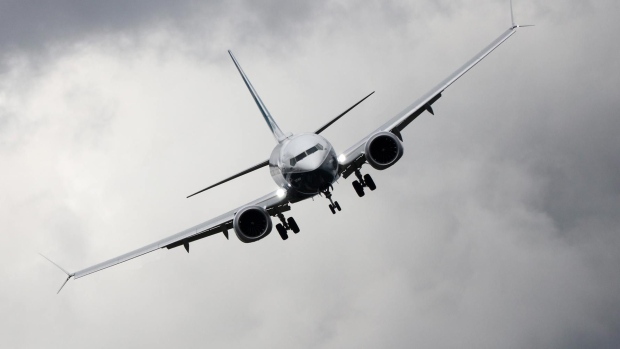Aug 3, 2020
Boeing Given Long List of Proposed Fixes for 737 Max to Return
, Bloomberg News

(Bloomberg) -- U.S. aviation regulators have proposed a long list of fixes to Boeing Co.’s grounded 737 Max in one of the most extensive set of requirements the agency has issued following an accident.
The Federal Aviation Administration on Monday asked for public comment on the changes it expects to require to the plane linked to two fatal crashes.
In addition to changes specific to the system implicated in the crashes, it would mandate broad computer changes to improve reliability, add a warning light that was inoperative in the two crashes and rerouting electrical wires that don’t meet safety rules.
Boeing rose 2.4% to $161.72 at 2:37 p.m. in New York.
The release of the proposal shows that, after 16 months of the plane’s grounding and a series of investigative reports and congressional hearings, aviation regulators are satisfied that the fixes will allow plane to safely resume service. Flight tests of the redesigned systems by FAA were completed July 2.
The agency “has preliminarily determined that Boeing’s proposed changes to the 737 Max design, flight crew procedures and maintenance procedures effectively mitigate the airplane-related safety issues” revealed in the crashes, it said in a summary report it included with the proposal.
The FAA’s proposal for fixes and a preliminary report on its findings from its own internal investigation provides the most detailed accounting by the agency to date on what the plane’s original shortfalls were and what went wrong in the two crashes.
The actions would cost U.S. airlines about $1 million for the 73 planes registered in the country, the FAA said. The agency didn’t estimate how much it would cost to make the required changes on the several hundred jets registered in other countries and didn’t account for Boeing’s costs. The Chicago-based manufacturer may cover some of the airlines’ repair costs under warranty, FAA said.
The public has 45 days to comment on the FAA’s plans. That means the plane most likely can’t get the official go ahead to return until October at the earliest. With airlines having to retrain pilots and perform maintenance on the grounded fleet, it will take weeks or months longer before the planes begin carrying passengers.
©2020 Bloomberg L.P.